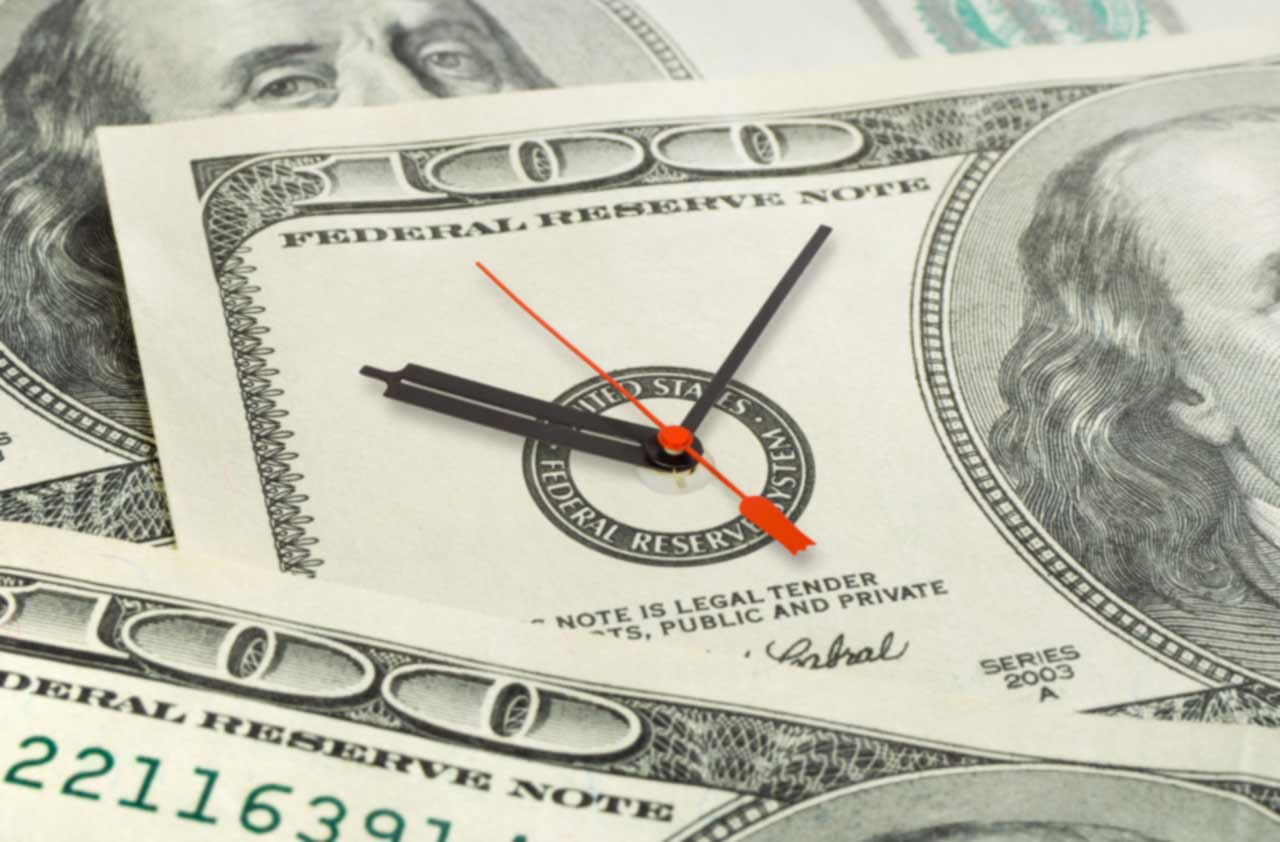Roth IRA: Convert Now or Pay Later?
Why the tax-code change should put a hurry-up on your decision to convert a traditional IRA into a Roth.


The wait is over.
If you were delaying your plans to do a Roth conversion until you knew for sure that President Trump could deliver on his tax cut promises, you have your answer.
Now is the time. And the clock may be ticking. It’s likely these low tax rates won’t last until you retire — even if your retirement isn’t all that far off.
From just $107.88 $24.99 for Kiplinger Personal Finance
Become a smarter, better informed investor. Subscribe from just $107.88 $24.99, plus get up to 4 Special Issues

Sign up for Kiplinger’s Free Newsletters
Profit and prosper with the best of expert advice on investing, taxes, retirement, personal finance and more - straight to your e-mail.
Profit and prosper with the best of expert advice - straight to your e-mail.
That’s because even though it may be great for the short term, most economic models, including that of Congress’ own Joint Committee on Taxation, show this tax plan will add at least $1 trillion to the nation’s debt over the next decade.
The problem is the government keeps kicking our debt can down the road, leaving it for some future generation to figure out. Meanwhile, the amount keeps growing — and it’s already more than $20 trillion, making it the largest national debt in the world.
And if the Fed continues to raise interest rates, the rates on government securities also will rise, which could add to the problem.
There are only a few ways this staggering burden can be reduced:
- The government can cut spending. (But it doesn’t like that idea much.)
- It can drive economic growth at a faster rate than the debt. (Republicans say this tax cut will accomplish that.)
- Or it can raise revenue by raising taxes.
If that happens and you’ve accumulated a hefty sum in your traditional IRA or 401(k) — as most workers have been trained to do over the past three decades — you could be in for a nasty surprise when you’re ready to withdraw those tax-deferred funds. (Or when you’re forced to take required minimum distributions at age 70½.)
And there’s no telling when a tax increase could happen. It could be in three years, if Trump isn’t re-elected — or maybe 10 or 20 years from now.
Think of this as a fire sale. We’re going to have much lower tax rates for at least the next few years. If you file a joint return, you can make as much as $315,000 and still be in a 24% tax bracket. So there’s a lot of room to start moving money out of traditional retirement plans and into a tax-free Roth.
Of course, to do that, you’ll have to pay the taxes on the money you withdraw now. But you should ask yourself: Would I rather pay 24% now or potentially pay 40%, 50% or more in the future?
Those percentages aren’t unprecedented.
Right now, for 2018, the highest rate you can be taxed at is 37%. In 1917, the highest tax rate jumped from 15% to 67% — and to 77% in 1918. In 1932, Congress raised taxes on top earners from 25% to 63%. And in 1944, the top rate peaked at 94% on taxable income over $200,000.
If you’ve been a diligent saver — putting money into your tax-deferred account for years and building a significant nest egg — this is an important decision to make, and the window could be narrow. Talk to your tax accountant and/or financial adviser now about the advantages of a Roth conversion and how it would fit in your overall retirement plan.
Kurt Supe and John Culpepper offer securities through cfd Investments, Inc., Registered Broker/Dealer, Member FINRA & SIPC, and Kurt Supe offers advisory services through Creative Financial Designs, Inc., Registered Investment Adviser. Creative Financial Group is a separate unaffiliated company. The CFD Companies do not provide legal or tax advice. Neither Creative Financial Group nor the CFD Companies are associated with SmartVestor or Ramsey Solutions. Neither SmartVestor nor Ramsey Solutions recommend or make an endorsement for services provided under the SmartVestor program.
Kim Franke-Folstad contributed to this article.
Profit and prosper with the best of Kiplinger's advice on investing, taxes, retirement, personal finance and much more. Delivered daily. Enter your email in the box and click Sign Me Up.

Kurt Supe is a certified public accountant and financial adviser as well as senior partner and co-founder of Creative Financial Group (www.creativefinancialgrp.com). He holds a bachelor's degree in finance from the University of Kentucky and has nearly 20 years of experience in the financial services industry.
-
 Gold and Silver Shine as Stocks Chop: Stock Market Today
Gold and Silver Shine as Stocks Chop: Stock Market TodayStocks struggled in Friday's low-volume session, but the losses weren't enough to put the Santa Claus Rally at risk.
-
 Don't Wait Until January: Your Year-End Health Checklist to Kickstart 2026
Don't Wait Until January: Your Year-End Health Checklist to Kickstart 2026Skip the fleeting resolutions and start the new year with a proactive plan to optimize your longevity, cognitive health, and social vitality.
-
 Premium Rewards Cards: More Perks, Higher Fees
Premium Rewards Cards: More Perks, Higher FeesSome issuers are hiking the annual fee on their flagship luxury credit cards by hundreds of dollars. Are they still worth using?
-
 How to Master the Retirement Income Trinity: Cash Flow, Longevity Risk and Tax Efficiency
How to Master the Retirement Income Trinity: Cash Flow, Longevity Risk and Tax EfficiencyRetirement income planning is essential for your peace of mind — it can help you maintain your lifestyle and ease your worries that you'll run out of money.
-
 I'm an Insurance Expert: Sure, There's Always Tomorrow to Report Your Claim, But Procrastination Could Cost You
I'm an Insurance Expert: Sure, There's Always Tomorrow to Report Your Claim, But Procrastination Could Cost YouThe longer you wait to file an insurance claim, the bigger the problem could get — and the more leverage you're giving your insurer to deny it.
-
 Could a Cash Balance Plan Be Your Key to a Wealthy Retirement?
Could a Cash Balance Plan Be Your Key to a Wealthy Retirement?Cash balance plans have plenty of benefits for small-business owners. For starters, they can supercharge retirement savings and slash taxes. Should you opt in?
-
 7 Retirement Planning Trends in 2025: What They Mean for Your Wealth in 2026
7 Retirement Planning Trends in 2025: What They Mean for Your Wealth in 2026From government shutdowns to market swings, the past 12 months have been nothing if not eventful. The key trends can help you improve your own financial plan.
-
 What Defines Wealth: Soul or Silver? Good King Wenceslas' Enduring Legacy in the Snow
What Defines Wealth: Soul or Silver? Good King Wenceslas' Enduring Legacy in the SnowThe tale of Good King Wenceslas shows that true wealth is built through generosity, relationships and the courage to act kindly no matter what.
-
 An Investing Pro's 5 Moves to Help Ensure 2025's Banner Year in the Markets Continues to Work Hard for You in 2026
An Investing Pro's 5 Moves to Help Ensure 2025's Banner Year in the Markets Continues to Work Hard for You in 2026After a strong 2025 in the stock market, be strategic by rebalancing, re-investing with a clear purpose and keeping a disciplined focus on your long-term goals.
-
 Introducing Your CD's Edgier Cousin: The Market-Linked CD
Introducing Your CD's Edgier Cousin: The Market-Linked CDTraditional CDs are a safe option for savers, but they don't always beat inflation. Should you try their counterparts, market-linked CDs, for better returns?
-
 How to Protect Yourself and Others From a Troubled Adult Child: A Lesson from Real Life
How to Protect Yourself and Others From a Troubled Adult Child: A Lesson from Real LifeThis case of a violent adult son whose parents are in denial is an example of the extreme risks some parents face if they neglect essential safety precautions.